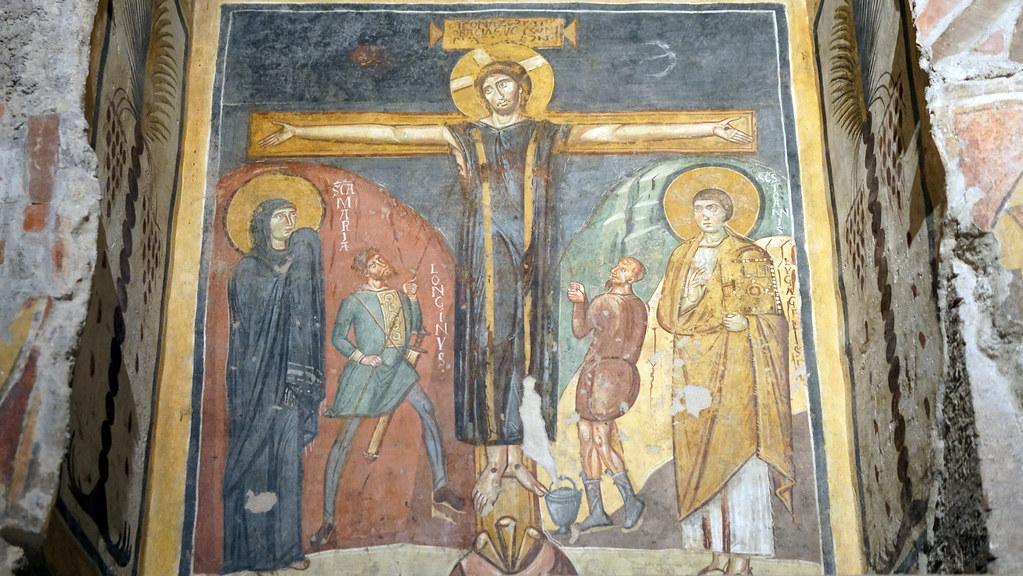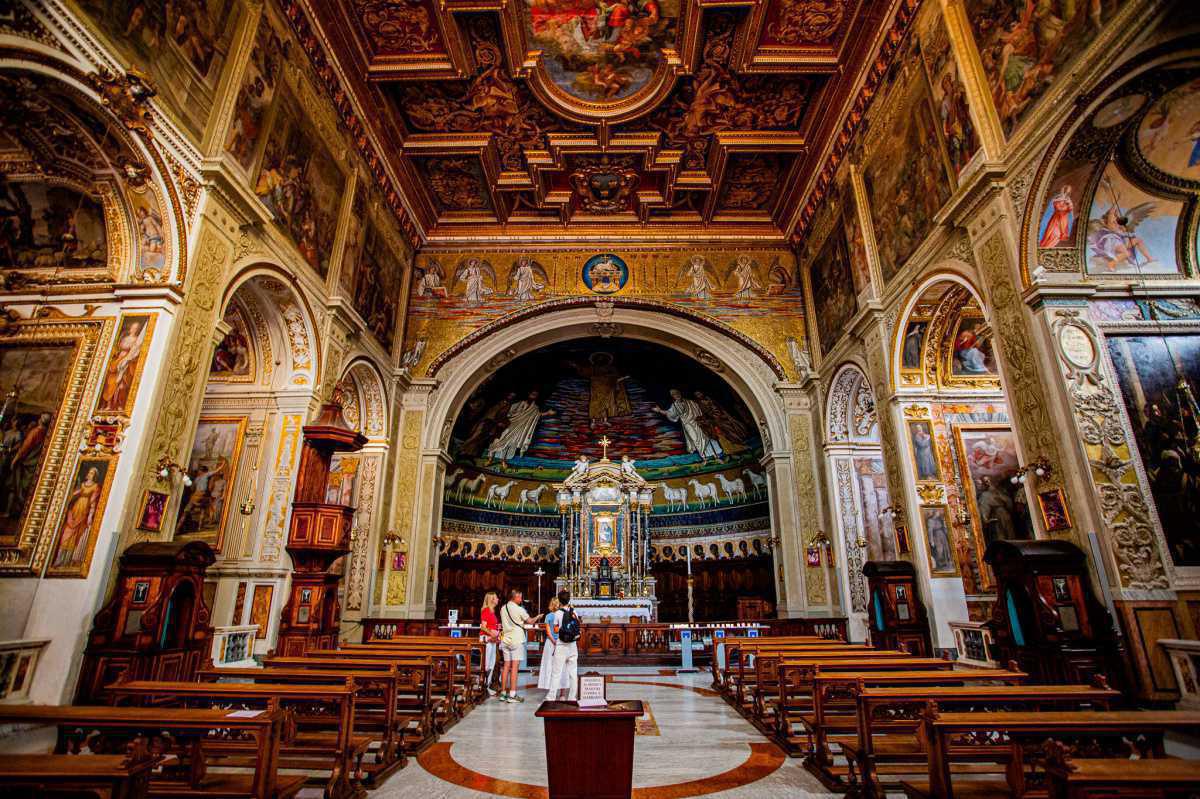
Church of Santa Maria Antiqua
Rione X Campitelli Roma Roma
The Earliest Marian Church of the Roman Forum - Where Ancient Christianity Left Its Mark in Fresco and Faith
The Church of Santa Maria Antiqua, nestled at the base of the Palatine Hill within the Roman Forum, is one of the oldest and most significant Christian monuments in Rome, dating back to the 6th century AD. Built within the ruins of a former imperial complex, the church served as a vital Christian center during the early Byzantine period. Its richly decorated interior features some of the earliest and most well-preserved Christian frescoes in the city, showcasing a unique blend of Roman, Greek, and Eastern artistic influences.
These frescoes, which include depictions of the Virgin Mary, saints, and biblical scenes, offer a rare glimpse into early Christian devotion and iconography. Santa Maria Antiqua was abandoned in the 9th century following a massive earthquake and remained hidden for centuries until its rediscovery in the 20th century. Today, it stands as a powerful testament to the survival of Christianity amid Rome’s shifting religious and political landscape.
Inside is the icon of the Virgin Mary, often referred to as the "Madonna and Child". This ancient fresco, located on the apse, is one of the earliest representations of the Virgin Mary in Christian art. Dating back to the 7th century, it presents the Virgin in a solemn and majestic pose, holding the infant Jesus, a common motif in early Christian iconography. The icon's style reflects a blend of Byzantine and Roman artistic traditions, with a somewhat austere and dignified portrayal of both figures. The image was highly venerated by early Christians, and it was thought to possess miraculous qualities, drawing pilgrims and faithful throughout the centuries. The preservation of this icon within the church is especially important, as it offers valuable insight into the development of Marian devotion in early Christianity, serving as a symbol of both divine protection and maternal love.
The Church is renowned for its remarkable collection of early Christian frescoes, some of the most important and well-preserved in Rome. These frescoes offer a glimpse into the transition from pagan Roman art to Christian iconography in the 6th and 7th centuries. Here are some of the most significant frescoes and mosaics found inside the church:
1. Mosaic of the Cross
Though more commonly associated with later Christian churches, cross motifs appear in several parts of the church, such as in the mosaics and frescoes. These early representations of the cross are significant as they mark the growing importance of the Christian symbol.
2. The Madonna and Child (Apse Fresco)
As previously mentioned, one of the most notable artworks in the church is the "Madonna and Child" fresco in the apse. This image of the Virgin Mary and the infant Jesus is a key example of early Christian Marian iconography. The figures are solemn and regal, and the depiction emphasizes the sanctity and majesty of the Virgin, a theme that became central to Christian worship in the following centuries.
3. The Fresco of Christ Pantocrator
This fresco, found in the church's sanctuary, depicts Christ as Pantocrator, the Almighty, who is the ruler of the universe. Christ is shown in a commanding posture, with his right hand raised in blessing and his left holding the Book of Life. The iconography of Christ Pantocrator became one of the defining images in Byzantine Christian art and influenced later depictions of Christ in Eastern and Western Christianity.
4. Scenes from the Life of Christ and the Apostles
Several biblical scenes can be found on the walls, including scenes from the Life of Christ and the Acts of the Apostles. These frescoes provide early depictions of key moments such as the Crucifixion, the Resurrection, and Christ's Ascension. They offer a visual narrative of Christ's life and ministry, and the artistic style blends Roman traditions with Christian themes.
5. The Frescoes of Saints and Martyrs
The walls of Santa Maria Antiqua also feature depictions of early Christian saints and martyrs, often with symbols associated with their lives or martyrdom. For example, you can find representations of Saint Peter, Saint Paul, and Saint Lawrence, as well as lesser-known figures from the early Christian period. These frescoes reflect the growing cult of saints and the importance of martyrdom in early Christian spirituality.
6. The Frescoes of the Good Shepherd
A fresco of the Good Shepherd can be found within the church, which is a common theme in early Christian art. The image of the shepherd carrying a lamb on his shoulders symbolizes Christ as the shepherd of his flock, protecting and guiding his followers. This theme has its roots in Roman art but took on new Christian meanings as a symbol of Christ’s care and salvation.
Artistic Significance: The frescoes in Santa Maria Antiqua represent a significant moment in the development of Christian art, bridging the late Roman artistic traditions with the emerging Byzantine style. The church's interior offers a rare opportunity to study how Christian imagery evolved in the early centuries, moving away from classical pagan styles to adopt new themes and symbols central to Christian faith and identity.
Prayer
Heavenly Father,
We gather in spirit before the Church of Santa Maria Antiqua, a remarkable testament to the early Christian faith nestled in the heart of the Roman Forum. We thank You for this ancient and sacred place, where the echoes of early worship continue to inspire and uplift us.
As we reflect on the rich history and beautiful frescoes that adorn this church, may we be reminded of the enduring strength and resilience of the early Christian community. Grant us the grace to draw inspiration from their faith and to stand firm in our own beliefs.
In this historic sanctuary, may we find a deeper connection to the roots of our faith, appreciating the legacy that has been passed down through generations. Let it be a place where we encounter Your presence and experience the peace that only You can provide.
Bless all who visit Santa Maria Antiqua, that they may be moved by its profound heritage and find encouragement in their own spiritual journeys. May the intercession of the saints depicted within its walls bring guidance and hope to all who seek You.
Through the witness of early Christians, may we be strengthened in our resolve to live out our faith with conviction and grace.
In Jesus' name, we pray. Amen.
Recommended Nearby:
Basilica of Sts. Cosmas and Damian
Located in the Roman Forum, this church, like Santa Maria Antiqua, was built over an ancient Roman structure and features some of the oldest Christian mosaics in Rome.
See Also:
Rome Highlights - Self Guided Tour
Rome, the Eternal City. With thousands of years worth of history, deciding between hundreds of churches can be a daunting task. But don’t worry, it is absolutely possible to get a taste of Rome in just a few days. The EWTN Travel team picked 15 top spots around the city. In the video, we show you how you can see them all in three days. Let’s get started.
Stay Connected:
Sign up and get weekly updates with new locations, itineraries and videos.

